MG MG3 vs Nissan Leaf – Performance, range & efficiency compared
Both models have their strengths – but which one suits you more?
Compare performance, efficiency, price and space directly: MG MG3 or Nissan Leaf?
Costs and Efficiency:
When it comes to price and running costs, the biggest differences usually appear. This is often where you see which car fits your budget better in the long run.
MG MG3 has a significantly advantage in terms of price – it starts at 15400 £, while the Nissan Leaf costs 30800 £. That’s a price difference of around 15351 £.
Engine and Performance:
Power, torque and acceleration are the classic benchmarks for car enthusiasts – and here, some clear differences start to show.
When it comes to engine power, the Nissan Leaf has a a bit edge – offering 217 HP compared to 194 HP. That’s roughly 23 HP more horsepower.
In acceleration from 0 to 100 km/h, the Nissan Leaf is a bit quicker – completing the sprint in 6.90 s, while the MG MG3 takes 8 s. That’s about 1.10 s faster.
In terms of top speed, the MG MG3 performs somewhat better – reaching 185 km/h, while the Nissan Leaf tops out at 157 km/h. The difference is around 28 km/h.
There’s also a difference in torque: Nissan Leaf pulls clearly stronger with 340 Nm compared to 148 Nm. That’s about 192 Nm difference.
Space and Everyday Use:
Whether family car or daily driver – which one offers more room, flexibility and comfort?
Both vehicles offer seating for 5 people.
In curb weight, MG MG3 is distinct lighter – 1237 kg compared to 1580 kg. The difference is around 343 kg.
In terms of boot space, the Nissan Leaf offers evident more room – 394 L compared to 293 L. That’s a difference of about 101 L.
In maximum load capacity, the MG MG3 performs a bit better – up to 983 L, which is about 193 L more than the Nissan Leaf.
When it comes to payload, MG MG3 slight takes the win – 448 kg compared to 415 kg. That’s a difference of about 33 kg.
Who comes out on top?
Overall, the MG MG3 shows itself to be secures victory with a clear margin and secures the title of DriveDuel Champion.
It convinces with the more balanced overall package and proves to be the more versatile choice for everyday use.
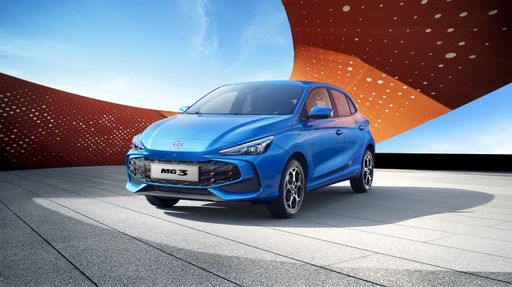
MG MG3
MG MG3
The MG MG3 presents itself as a vibrant and compact hatchback that's well-suited for urban environments. Its design combines a youthful aesthetic with practicality, offering a comfortable interior and a user-friendly infotainment system. With its engaging driving dynamics, it provides an enjoyable city ride that belies its budget-friendly pricing.
details @ news.mgmotor.eu
@ news.mgmotor.eu
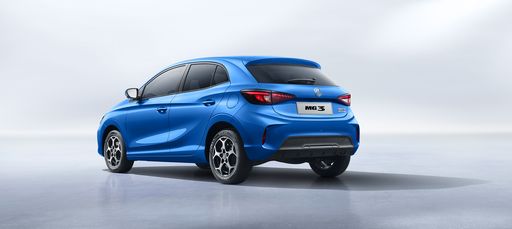 @ news.mgmotor.eu
@ news.mgmotor.eu
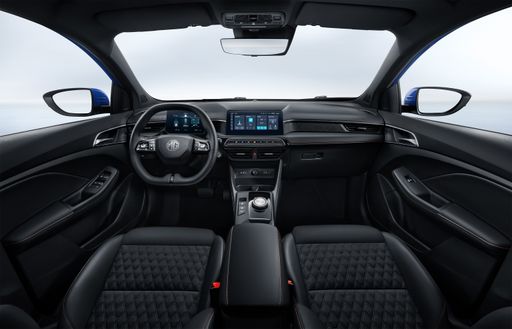 @ news.mgmotor.eu
@ news.mgmotor.eu
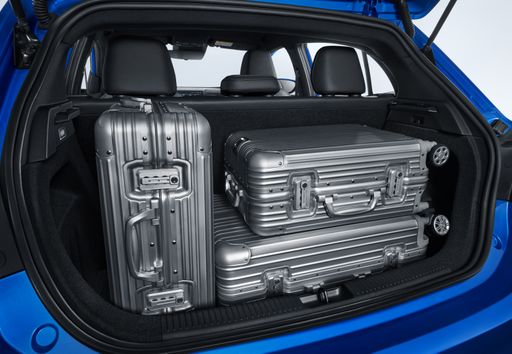 @ news.mgmotor.eu
@ news.mgmotor.eu
Nissan Leaf
The Nissan Leaf stands out as a pioneering model in the realm of electric vehicles, known for its impressive blend of practicality and eco-friendliness. It offers a smooth and quiet driving experience, making it an ideal choice for city commuting and longer journeys alike. The interior design is both comfortable and intuitive, providing drivers with a sense of modernity and ease of use.
details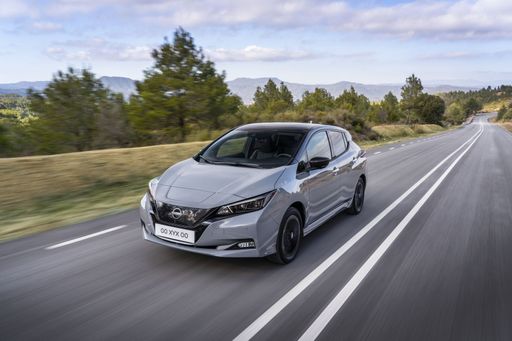 @ germany.nissannews.com
@ germany.nissannews.com
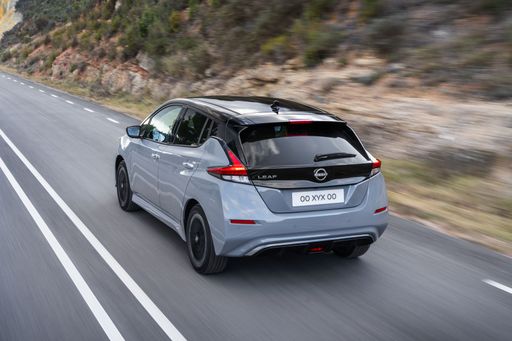 @ germany.nissannews.com
@ germany.nissannews.com
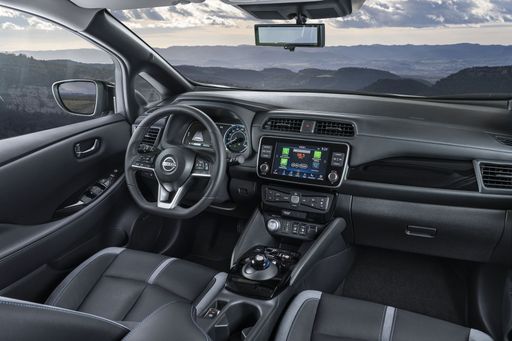 @ germany.nissannews.com
@ germany.nissannews.com
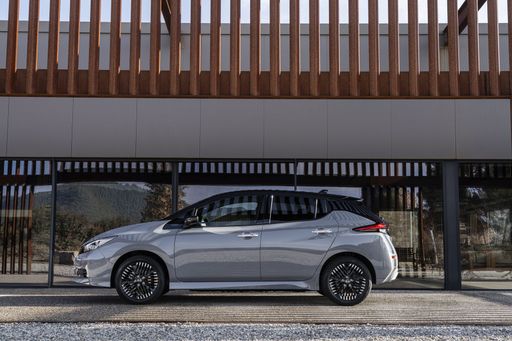 @ germany.nissannews.com
@ germany.nissannews.com

|

|
|
|
|
Costs and Consumption |
|
|---|---|
|
Price
15400 - 21400 £
|
Price
30800 - 37200 £
|
|
Consumption L/100km
4.4 - 6.1 L
|
Consumption L/100km
-
|
|
Consumption kWh/100km
-
|
Consumption kWh/100km
16.7 - 17.8 kWh
|
|
Electric Range
-
|
Electric Range
270 - 385 km
|
|
Battery Capacity
-
|
Battery Capacity
39 - 59 kWh
|
|
co2
100 - 137 g/km
|
co2
0 g/km
|
|
Fuel tank capacity
36 - 45 L
|
Fuel tank capacity
-
|
Dimensions and Body |
|
|---|---|
|
Body Type
Hatchback
|
Body Type
Hatchback
|
|
Seats
5
|
Seats
5
|
|
Doors
5
|
Doors
5
|
|
Curb weight
1237 - 1285 kg
|
Curb weight
1580 - 1756 kg
|
|
Trunk capacity
293 L
|
Trunk capacity
385 - 394 L
|
|
Length
4113 mm
|
Length
4490 mm
|
|
Width
1797 mm
|
Width
1788 mm
|
|
Height
1502 mm
|
Height
1540 - 1545 mm
|
|
Max trunk capacity
983 L
|
Max trunk capacity
790 L
|
|
Payload
373 - 448 kg
|
Payload
384 - 415 kg
|
Engine and Performance |
|
|---|---|
|
Engine Type
Full Hybrid, Petrol
|
Engine Type
Electric
|
|
Transmission
Automatic, Manuel
|
Transmission
Automatic
|
|
Transmission Detail
Automatic Gearbox, Manual Gearbox
|
Transmission Detail
Reduction Gearbox
|
|
Drive Type
Front-Wheel Drive
|
Drive Type
Front-Wheel Drive
|
|
Power HP
116 - 194 HP
|
Power HP
150 - 217 HP
|
|
Acceleration 0-100km/h
8 - 10.8 s
|
Acceleration 0-100km/h
6.9 - 7.9 s
|
|
Max Speed
170 - 185 km/h
|
Max Speed
144 - 157 km/h
|
|
Torque
148 Nm
|
Torque
320 - 340 Nm
|
|
Number of Cylinders
4
|
Number of Cylinders
-
|
|
Power kW
85 - 143 kW
|
Power kW
110 - 160 kW
|
|
Engine capacity
1490 - 1495 cm3
|
Engine capacity
-
|
General |
|
|---|---|
|
Model Year
2024 - 2025
|
Model Year
2019
|
|
CO2 Efficiency Class
C, E
|
CO2 Efficiency Class
A
|
|
Brand
MG
|
Brand
Nissan
|
What drivetrain options does the MG MG3 have?
The MG MG3 is offered with Front-Wheel Drive.
The prices and data displayed are estimates based on German list prices and may vary by country. This information is not legally binding.
